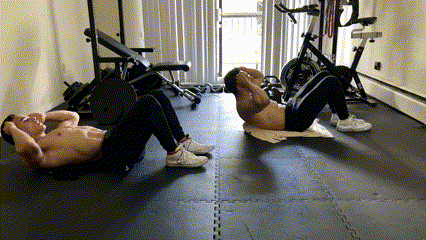How to get a 'Six Pack': Tips, Abnatomy, and Workout Routines
- tkenomotome
- Apr 5, 2023
- 3 min read
Updated: Sep 8, 2023

In this article, we will give you tips on acquiring a muscular six-pack, explaining each part of the abdominal region, and how to work these muscles to execute a proper overall abdominal workout!
Key Points
Breathing is essential when executing abdominal exercises. This will put your abs through an increased range of motion, getting more out of the workout! To do this, slowly exhale in the concentric phase of the movement until the peak contraction occurs and inhale in the eccentric phase.
This will also help tighten your abdominal region when executing each repetition, thus less likely to produce a fat-like (bloated/GH gut) abdominal look.
Like any other muscle group, allow your abdominal muscles time to recover after each workout. This will prevent injuries, optimize muscle growth, and improve performance. Keep in mind however that your abdominal muscles are involved in stabilizing the core during everyday movements and compound exercises. Therefore, like the calves, the abdominal muscles generally do not need as much time to recover as the leg or back muscles. We recommend doing abdominal workouts once every two to three days.
Both repetition and weighted abdominal workout routines will help build abdominal muscles to depict a muscular six-pack.
Reduce the use of the hips or momentum when executing abdominal exercises!
The time under tension and mind-to-muscle connection principles apply to abdominal workouts too! This is why each repped ab workout is either 25 repetitions or 1 minute long and at least 35 seconds long for weighted ab workouts.
If your abs don't show, through your diet, you need to eat in an overall daily calorie deficit to lose weight and body fat, thus, allowing your abs to show.
Although an ab training routine will help build muscle and improve strength in the abdominal region, workouts alone will not get you a visual six-pack if you are over-eating!
It is advisable to incorporate abdominal exercises into your warm-up routine when working out at the gym, as postponing them until the end of your workout may result in not doing these exercises altogether.
Abnatomy

Rectus Abdominis: Commonly depicted through its appearance of creating a 'six-pack'. The Direction of Muscle Fibers: Extend vertically from top to bottom
Workout: Flexion (top to bottom for the upper abs, bottom to top for the lower abs)

External Oblique: Located on the lateral side of the abdominal region with a rectangle-like appearance The Direction of Muscle Fibers: Diagonally (obliquely) anterior to posterior along the sides of the abdomen
Workout: Lateral Flexion and Rotation

Internal Oblique: Below the external obliques covering the lateral side of the abdomen
The Direction of Muscle Fibers: Stretch diagonally along the abdomen opposite direction to the external obliques
Workout: Lateral Flexion and Rotation (in a different direction than the external obliques)

Serratus: On the anterior side, it is a small curved muscle below the chest interlocking with the obliques The Direction of Muscle Fibers: Diagonally connecting to the muscle fibers of the obliques
Workout: Working in unison with the obliques and through the pull or push movement of the shoulder blades
Transverse Abdominis: Covered by the other abdominal muscles, deep within the abdominal cavity wrapping around the anterior and lateral regions of the abs under the rectus abdominis and the obliques. The Direction of Muscle Fibers: Extending horizontally across the abdomen
Workout: Stability exercises
Sample Workouts

Leg Raises - Rectus Abdominis

Crunches - Rectus Abdominis

Oblique Heel Taps - External Obliques

Side Leg Raises - Internal Obliques

Plank Oblique Taps - Serratus





Comments